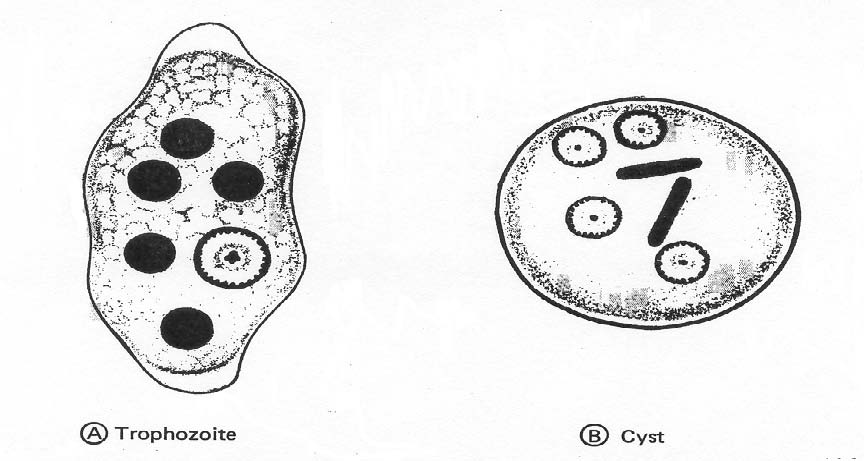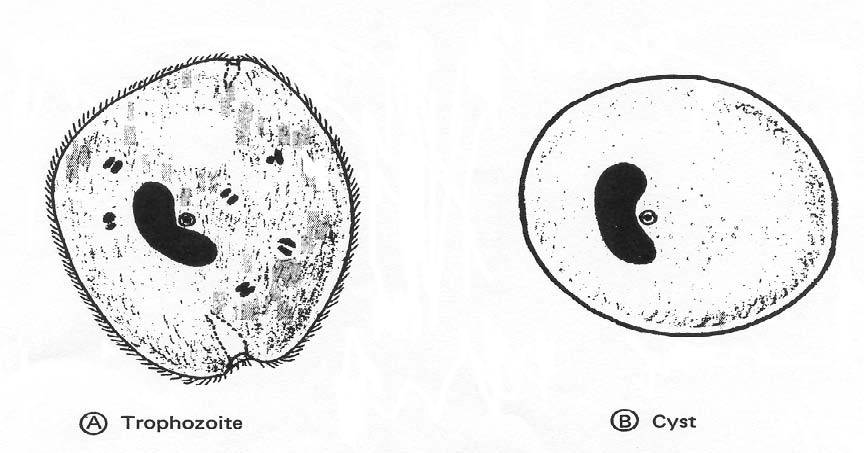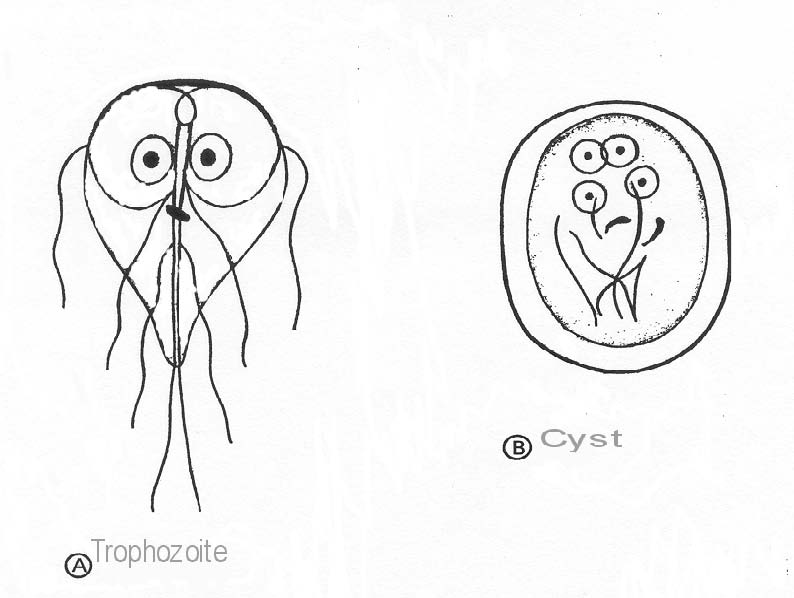Principles of Epidemiology and Microbiology
Lesson 2: Public Health Microbiology
Section V: Protozoa
2-22
2-22. CLASSIFICATION OF PROTOZOA
The pathogenic protozoa of man can be grouped into four major classes:
a. Class Rhizopoda (ameba). These organisms are characterized by finger-like protoplasmic processes known as pseudopods (false feet), which serve as organs of locomotion and for the engulfment of food. They multiply by binary fission during the motile stage, in which they are known as trophozoites. Many species form cysts, which consist of several nuclei and a resistant membrane (figure 2-11B). The trophozoites are very susceptible to injurious agents and are easily destroyed; however, the cysts are quite resistant. The cysts, therefore, are responsible for transmitting disease. Amebae of man are found primarily in the digestive tract.
b. Class Ciliata (ciliates). The ciliates are characterized by an oval, uniformly shaped cell having two nuclei (macronucleus and micronucleus) and numerous short, hair-like appendages (cilia) for locomotion (figure 2-12 A). Some species multiply by binary fission and some by conjugation. Cysts are not commonly encountered, but when found, they are double walled, spherical bodies. The only species pathogenic to man is Balantidium coli, a natural inhabitant of the large intestine of the domestic hog.
c. Class Mastigophora (flagellates). The flagellates are distinguished by having, at some time during the life cycle, relatively long, filamentous protoplasmic processes of locomotion known as flagella (figure 2-13 A). The flagella may be multiple or single. Multiplication is by binary fission. Some species produce cysts, while others do not. Flagellates of man are normally found in the intestinal tract, the genital tract, and the circulatory system.
Figure 2-11. Entamoeba histolytica.
Figure 2-12. Balantidium coli.
Figure 2-13. Giardia lamblia.




